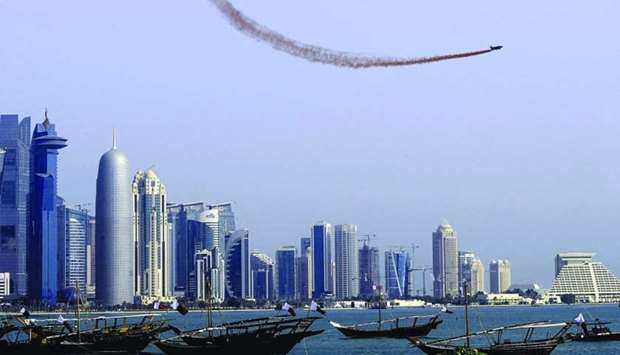Qatar’s economy is set to recover from the pandemic in second half of this year (H2) and grow steadily over the medium term, amid ongoing investment ahead of World Cup 2022 and a rise in gas production, according to Oxford Economics.
“The country’s GDP growth is now seen averaging 4% in 2021-22, although dependence on travel and tourism and expatriate workers suggests downside risks,” Oxford Economics said in its latest country economic forecast.
Qatar, Oxford Economics noted, is “more resilient” to low oil prices than other producers as it has the “lowest fiscal break-even point” ($40/barrel in 2020) in the GCC, large financial buffers and “greater flexibility” over oil output since leaving Opec in January 2019.
“But the budget will move into deficit (equal to about 6% of GDP) this year as revenues slump,” the forecast said.
Crude oil output rose just 0.1% in 2018 and Oxford Economics thinks it “declined” by 0.2% in 2019.
“Given collapsing external demand and in light of renewed Opec+ production cuts (albeit Qatar is not party to this), we think oil output will now fall to 575,000 bpd in 2020, the lowest since 2002,” Oxford Economics noted.
The lifting of the moratorium on North Field gas projects will have a “positive” impact and plans to increase LNG capacity by almost 65% to 126mn tonnes per year by 2027 from 77mn tpy currently remain on track. Qatar intends to pick international partners at end-2020, it said.
Qatar’s banks, according to Oxford Economics, have been “resilient and are well-capitalised, profitable and with low levels” of non-performing loans.
However, their exposure to construction and real estate points to worsening asset quality in the short term as coronavirus concerns take their toll on demand, leading to the recent downgrade in the credit rating outlook on Qatari banks from Moody’s.
The Qatar Central Bank (QCB) has injected liquidity into the banking system as part of its QR75bn support package to offset funding pressure. Commercial banks’ non-resident deposits staged a recovery in May following two months of decline, Oxford Economics said.
The growth in Qatar’s non-oil sector averaged 3.5% in 2017-18 but slowed to 1.3% in 2019, notwithstanding outlays on infrastructure projects in preparation for the 2022 World Cup.
“We now see non-oil GDP falling 5.7% this year, much worse than the 0.8% decline we expected three months ago and our forecast of 2.9% growth in February. In our forecast, we see recovery in H2, as restrictions put in place to control the spread of the virus are loosened and activity returns to normality, with a strong rebound in 2021. The reopening of borders to international visitors in August should support the outlook for the tourism sector,” Oxford Economics said.




